2019 Ducati Panigale V4 R Unveiled At EICMA

How does a claimed 221 hp sound to you?
We knew it was coming, but now that the cover has been taken off the 2019 Ducati Panigale V4 R, all we can say is wow! Take the WSBK-legal displacement 998 cc Desmosedici Stradale R engine, attach frame sections to both ends to mount top-shelf Öhlins suspension, and wrap the whole package in a Ducati Corse aerodynamics package, and you’ve got a superbike that is ready to take on the world.
Desmosedici Stradale R engine
As you would expect, the Desmosedici Stradale R engine is a 90° V4. The cylinders are banked 42° rearward from horizontal for optimal packaging. The Twin Pulse firing order, which has the two left-hand cylinders fire closely together with the right-hand cylinders doing the same, will maintain the V-Twin-like sound that Ducati. The new forged steel, counter-rotating crankshaft is 1,100 grams lighter than on the Desmosedici Stradale, retains the 70° crank pin offset, and is mounted on brass bushings.
Molded aluminum pistons feature a single compression ring and an oil ring, which utilizes what Ducati calls “‘box in box’ technology: this contains both skirt height and below-chamber thickness, helping to reduce attrition and inertial loads while maintaining the necessary strength and stiffness.” Sliding those pistons in their cylinder bores are titanium connecting rods – each of which is 100 g lighter than the steel ones found in the standard Stradale. While the cylinder bores remain 81 mm, the stroke is bumped to 48.4 mm, yielding a 998 cc displacement. Compression ratio is a lofty 14:1.
Ducati tells us that the four camshafts feature dedicated profiles that operate the 34 mm titanium intake valves and the 27.5 mm steel exhaust valves with an increased lift. The valves themselves feature “titanium half-cones,” a feature typically only used by builders on racing machinery. The larger intake ducts in the cylinder heads have benefitted from fluid dynamic design.
Feeding those heads are oval throttle bodies that are the equivalent of 56 mm diameter units – an increase of 4 mm from the Stradale. Variable-height air intake horns further tune the airflow for engine conditions across a broader rpm range. Additionally, the atmosphere is cleaned by a free-flowing Sprintfilter.
So thorough were Ducati’s engineers, the oil pump was redesigned and the alternator was lightened, ultimately removing an additional 100 g from the engine’s weight.
The result of all this effort is a fire-breathing V4 that cranks out a claimed “221 hp (162 kW) at 15,250 rpm and 112 Nm of torque at 11,500 rpm (EU homologation values).” Furthermore, if fit with the full-racing Ducati Performance exhaust by Akrapovič, the claimed horsepower output jumps to 234 hp (172 kW) at 15,500 rpm. The rev-limit of the Desmosedici Stradale R is 16,000 rpm, and it shifts to 16,500 rpm in sixth gear.
Race-focused chassis
While the Desmosedici Stradale R engine is still used as a stressed member, the Panigale V4 R front frame isn’t the same on the V4 S. First, it is lighter, but it also has its stiffness tuned to Ducati Corse specifications which was achieved through machining the sides – and, as a side benefit, reduces weight. Out back, the swingarm pivot height is adjustable over four positions which are set 2 mm apart. These changes highlight the track-focus of the Panigale V4 R.
Where the Panigale V4 was designed to be the ultimate bike for both street and track riders, the V4 R is laser-focused on the track. Consequently, the semi-active Öhlins suspension has been nixed for Öhlins professional units with mechanical adjustments. Based on Öhlins WSB racing forks, the fork is an exclusive to V4 R unit, the pressurized Öhlins 43 mm NPX 25/30 fork, featuring a titanium nitride slider treatment. According to Ducati, “Compared to a traditional system, a pressurized [system] minimizes the risk of oil cavitation, offering improved absorption of bumps, pits and ripples while ensuring excellent braking stability and support to give the rider better front-end ‘feel’.” The compression and rebound functions are in separate fork tubes, which utilize 25 mm and 30 mm pistons, respectively. The forks themselves were designed to save 600 g of weight compared to the V4 S.
The shock is an Öhlins TTX36 unit. Finally, an Öhlins steering damper was also fitted to the chassis. All of these units are mechanically adjusted for maximum tunability.
Ducati Corse-derived Aero Pack
Wrapping all of that high-technology mentioned above is an aerodynamic package developed by Ducati Corse in conjunction with the Ducati Style Centre. This package includes: screen, nose fairing, and larger lateral fairings; efficient lateral vents for radiator airflow; and aerodynamic wings.
The front end of the bike features a higher, steeper angled windscreen to give the rider more protection around the helmet and shoulders at high speeds. Additionally, the fairing itself is 15 mm wider on both sides to keep the rider’s arms and shoulders out of the wind blast when in a tucked riding position.
The side fairings have been widened by a surprising 38 mm per side with the goal of helping the air to flow better around the rider while also “maximizing aerofoil efficiency.” Additionally, the fairing’s gills replace the venting on the Panigale V4 to help flow air through the air and oil coolers more effectively. According to Ducati, the “new vents increase air through-speeds on water and oil radiators by 6% and 16% respectively.”
OEM wings are now officially a thing in 2019. The Panigale V4 R’s wings take a step away from the styling of those on Ducati’s current MotoGP bikes and, instead, harkens back to the GP16 generation bike. According to Ducati, the V4 R’s wings are more efficient than those currently utilized in MotoGP.
Ducati describes the wings thusly: “These monoplane single-element wings have a trapezoidal layout with a tapered profile from root to tip. Wing performance has been improved thanks to the insertion of the longitudinally arranged strake and the winglet which ‘insulates’ the airflow over its surfaces.”
The result of the combination of the fairing and wing design is an additional 66 lbs. of downforce at 168 mph! This downforce will reduce front wheel “float” and the tendency wheelie at high speeds. Ducati says that the wings improve stability under braking while turning into a corner. Additionally, the intervention of electronic rider aids is also reduced thanks to the new wings. Finally, Ducati claims the functional cost of the wings is fairly low, namely “a small increase in steering torque caused by the heightened stability.”
Electronics package
As we would expect from a bike this focused on racetrack performance, the Panigale V4 R’s electronics represent the best that Ducati has produced for public consumption. The electronic controls are:
- Bosch Cornering ABS EVO
- Ducati Traction Control EVO
- Ducati Slide Control
- Ducati Wheelie Control EVO
- Ducati Power Launch
- Ducati Quick Shift up/down EVO
- Engine Brake Control EVO
Naturally, these controls can be adjusted from the left grip, via the TFT display.
While we don’t have much more information about the 2019 Ducati Panigale V4 R, we will let you know when more information, like the arrival date and the MSRP, becomes available.
Be sure to follow the rest of our 2018 EICMA Show coverage with information on the new models being revealed in Milan all through the next few days.
2019 Ducati Panigale V4 R Features
- 90° Desmosedici Stradale V4, R version, 998 cm3, 221 hp (162 kW) at 15,250 rpm
- Forged steel crankshaft with reduced stroke
- Molded aluminum pistons with single compression ring plus oil ring
- Titanium con rods
- Titanium intake valves
- Oval throttle bodies (Ø 56 mm equivalent) and aerodynamic throttle openings
- Dedicated variable-height air intake horns
- Exhaust manifolds of optimised length
- Cylinder heads with larger intake ducts
- High-permeability Sprintfilter P08 air filter
- Lightened, optimized-stiffness aluminum alloy Front Frame
- Pressurized Öhlins NPX 25-30 forks with manual adjustment
- Öhlins TTX36 shock absorber with manual adjustment
- Öhlins steering damper with manual adjustment
- Single-sided aluminum swingarm with adjustable pivot height (4 positions)
- Total Black Marchesini forged aluminum wheels
- Pirelli Diablo Supercorsa SP tyres (rear 200/60)
- Braking system with Brembo Stylema® monobloc calipers
- Aero Pack with carbon fiber wings
- 16-litre aluminum fuel tank with racing lay-out
- Carbon fibre front mudguard
- Carbon fiber rear manifold heat guard
- Dedicated seat
- 15/42 final transmission with 520 chain
- Full-TFT 5” screen
- Riding Modes (Race, Sport, Street)
- Electronics package with 6-axis Inertial Measurement Unit (6D IMU) including: ABS Cornering Bosch EVO; Ducati Traction Control EVO (DTC) EVO; Ducati Slide Control (DSC); Ducati Wheelie Control EVO (DWC) EVO; Ducati Power Launch (DPL); Ducati Quick Shift up/down EVO (DQS) EVO; Engine Brake Control EVO (EBC) EVO.
- Pit Limiter
- Lap Timer EVO
- Keys for fast selection of controls
- Ducati Multimedia System (DMS)
- Full-LED headlight with DRL
- Single-seater configuration
- Ducati Data Analyzer (DDA+) with GPS module
- Lithium-ion battery
- Supplied: aluminum mirror hole covers, plate holder removal kit

Like most of the best happenings in his life, Evans stumbled into his motojournalism career. While on his way to a planned life in academia, he applied for a job at a motorcycle magazine, thinking he’d get the opportunity to write some freelance articles. Instead, he was offered a full-time job in which he discovered he could actually get paid to ride other people’s motorcycles – and he’s never looked back. Over the 25 years he’s been in the motorcycle industry, Evans has written two books, 101 Sportbike Performance Projects and How to Modify Your Metric Cruiser, and has ridden just about every production motorcycle manufactured. Evans has a deep love of motorcycles and believes they are a force for good in the world.
More by Evans Brasfield



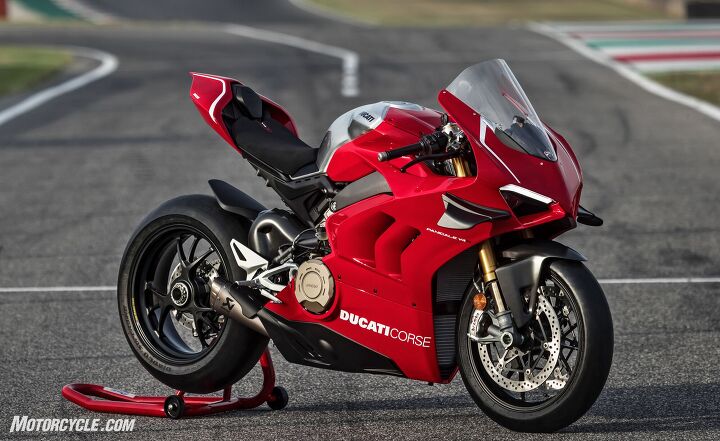

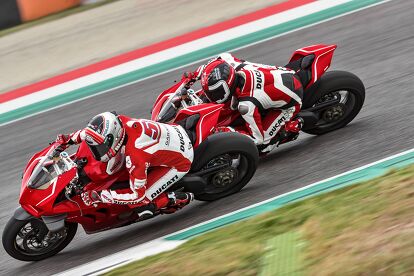











































































































































































































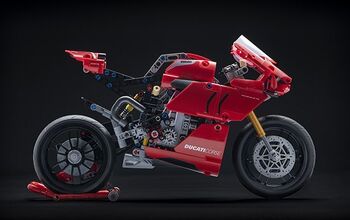
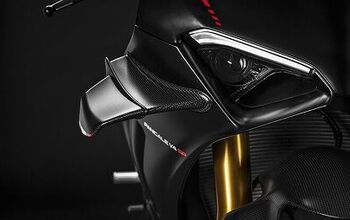

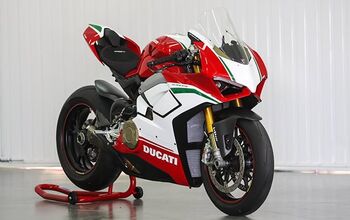













Comments
Join the conversation
yep I love this one
https://photos.smugmug.com/...
I've been lusting over a Ducati for about 6 years now, and finally got the opportunity and funds to afford a monster 1200. Such a beautiful machine. I feel privileged to own it. Wish I could use it to it's potential.